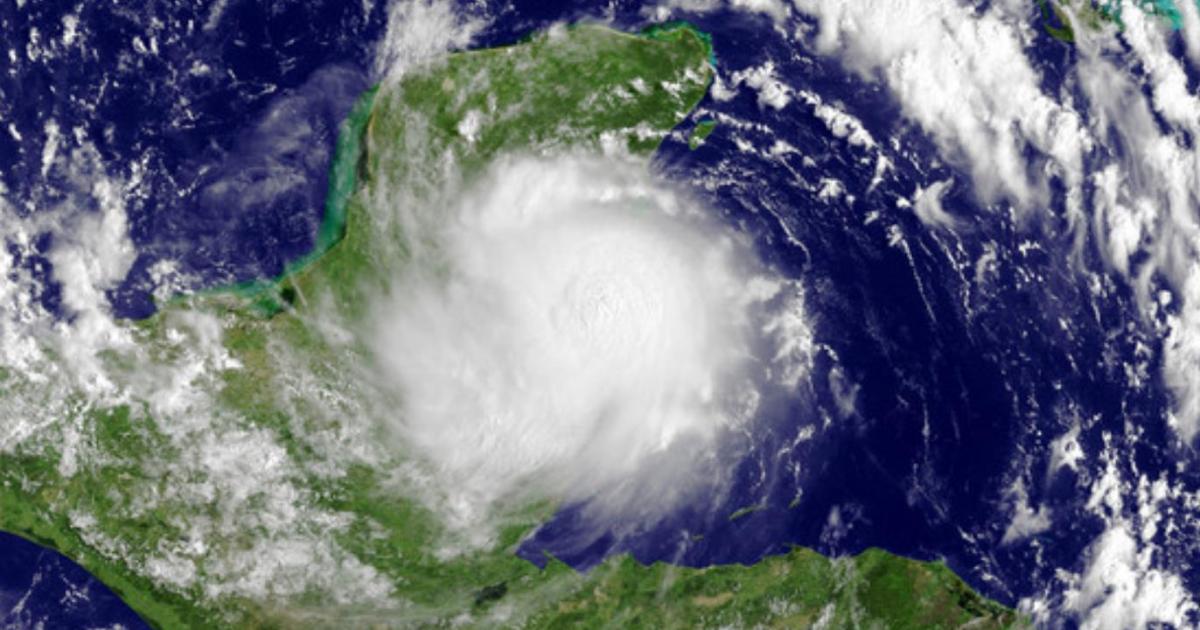The Sultanate of Oman has been one of the Arab countries most exposed to cyclones and tropical storms for nearly 140 years.
The Sultanate of Oman, located in the southeastern corner of the Arabian Peninsula, regularly receives the effects of tropical cyclones due to its coastline along the Arabian Sea.
The Arabian Sea is home to
tropical cyclones
Most tropical cyclones originated in the Arabian Sea, a part of the Indian Ocean located north of the equator and west of India.
- The main cause of the damage caused by tropical cyclones in the Arabian Peninsula is the floods that have caused total losses over the past years estimated at billions of dollars and hundreds of deaths.
Cyclone Gonu was the most powerful and dangerous of these cyclones, which caused $4 billion in damages and 50 deaths when it hit Oman in 2007.
Between 1890 and 1996, 36 storms struck Oman, although some terrestrial storms may be excluded from the historical record due to the lack of population centers.
About 48.5% of hurricanes dissipate without making landfall or moving ashore, and about 1 in 3 storms move towards the Arabian Peninsula.
Storms do not form in the western Arabian Sea due to cold sea surface temperatures (due to strong monsoon winds), as well as dry air from the Arabian Peninsula.
On average, storms strike the Sultanate of Oman once every 3 years, mostly between the states of Masirah and Salalah, usually before June or after October.
About once every 5 years, the storm affects the Dhofar region in southern Oman, and Muscat, the Omani capital, about once every 10 years.
140 years of hurricanes
June 2, 1881: A storm crossed Masirah Island and faded over southeast Oman.
1890: A storm kills 757 people when most of the Omani capital, Muscat, is flooded.
1959: A storm causes a ship to sank near southern Oman, resulting in the loss of all 141 crew members.
From 1943 to 1967: Tropical cyclones accounted for about 25% of the total precipitation in Salalah.
June 1977: A storm hit Masirah Island, causing 105 deaths and becoming Oman's worst natural disaster in the 20th century.
1979: Knowledge of severe storms on land began.
December 1998: Another storm-related debris killed 18 people.
2002: A storm killed 9 people and caused $25 million in damages.
Hurricane Gonu..the strongest and most dangerous
2007: Cyclone Gonu was the most destructive in Oman, the most powerful storm recorded in the Arabian Sea and the most powerful on land.
The intensity of the hurricane reached the fifth degree, and it led to the height of the sea waves to 12 meters and the occurrence of floods that paralyzed traffic, smashed streets, fell trees, swept cars and inundated some buildings.
Gonu caused $4 billion in damages and losses and killed about 50 people, making it Oman's worst natural disaster.
Waves of Cyclone Gonu damaged the port of Fujairah in the United Arab Emirates.
"Fit", "Kaileh" and "Makunu"
June 5, 2010: Cyclone Phet began to form on May 31, 2010 in the sea and its strength was increasing rapidly due to the decrease in atmospheric pressure over the sea, with wind speed reaching 235 km per hour on the next day, June 1, 2010, and it was classified of the fourth degree.
In anticipation of the cyclone, the Omani authorities evacuated the residents of Masirah Island and other cities located on the east coast of the country to safer interior places.
Hurricane Phet caused slightly weaker losses and damages, amounting to $780 million, and 24 deaths while crossing east Oman.
2011: Storm Kaila killed 19 people as it passed near the southern coast of the Sultanate of Oman, causing damage estimated at $80 million.
2014: The archeology team discovered evidence that a major flood affected Ras Al Hadd in eastern Oman, possibly as a result of a tsunami or severe storm.
2014: Cyclone Nilufer killed 4 people due to rain showers.
- May 21, 2018: A tropical cyclone called "Mekunu" formed in the Arabian Sea and mainly affected the areas located at the southern tip of the Arabian Peninsula for the countries of Yemen, Oman and Saudi Arabia, and the islands located in the areas it passes through, such as Socotra Island.
The center of the cyclone, which is located about 470 km from the Omani city of Salalah, started with a wind speed of 126 to 144 km / h, and a wave height of 5 to 8 meters, with an estimated speed of 12 km / h.
The death toll from the cyclone in Yemen and Oman was estimated at 13, including a girl.
Hurricane Shaheen.. 2021
October 2, 2021: Cyclone Shaheen reached the coast of the Sultanate, causing human losses and material damage, amid accelerated government measures to reduce damage, including a two-day holiday, and the intervention of the armed forces to the rescue.
October 4, 2021: The Sultan of Oman, Haitham bin Tariq, ordered the formation of a ministerial committee to assess the damage and provide support and assistance as soon as possible, while expediting the repair of infrastructure and restoring damaged services.
October 4, 2021: The National Center for Early Warning of Multiple Hazards in the Sultanate reported, through a statement, that "the direct effects of the tropical situation (Cyclone Shaheen) have ended."
October 5, 2021: The Sultanate of Oman announced the death of 11 people, the loss of 9 and the rescue of 654 others, due to tropical cyclone "Shaheen", during the past three days.

